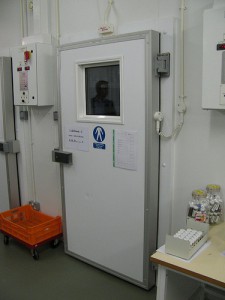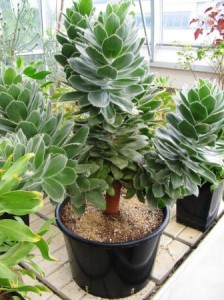
Although some have emphasized the need to breed crops for future climatic conditions, much of the world’s farming population relies on landrace populations, not formal breeding networks.
Undeniable, of course, and a good reason to not forget landraces (farmers’ local varieties) when thinking about how agriculture will (or will not) adapt to climate change. The new paper by Kristin Mercer and Hugo Perales in Evolutionary Applications from which the above quotation is taken (minus the references for clarity, as with all subsequent quotes) won’t let you forget.
The authors look in some detail at each of the possible responses that landraces may have to climate change. They could simply “adjust their phenotype” (plasticity). Or they could adjust their genotype, otherwise known as evolution, and thus “keep up” with the climate. They could also migrate to more hospitable places. And, finally, they could die out (extinction).
What will determine which of these routes any particular landrace follows? Mercer and Perales think two main factors need to be considered: the level and pattern of adaptive genetic variation in the landrace, and the details of how climate, and therefore selection pressures, will actually change. They say they recognize that what farmers do will also determine the outcome, but somewhat disappointingly leave a discussion of that to a later date. They list about a dozen quite specific research questions that would need to be tackled to “understand how landraces in crop centres of diversity may respond to climate change,” which I’ll reproduce in full for those who don’t have access to the paper (they’re in Box 1).
Genetic structure
• Is available genetic variation appropriate for evolutionary response to climate change, especially for selfing or clonal crops?
• At what rate will evolution proceed given heritability of traits and strength of selection?
• Might there be constraints on evolution to multiple environmental changes given the genetic correlations among traits?
• Is there capacity for evolution of plasticity?
• Might populations be plastic in response to climate change, especially for selfing or clonal crops?
• Will different types within a species, or landraces from different regions, respond differently?
• Will adaptive or novel variation be available to populations for evolution based on patterns of gene flow and mutation rates?
• Would gene flow from improved varieties improve or reduce the evolutionary potential or plastic response of landrace populations?
Climate change patterns
• What aspects of climate change will impose directional, disruptive, or fluctuating selection?
• Could selection be strong enough to reduce genetic variation within or among populations?
• Could it reduce effective population size or cause major mortality, which should reduce genetic variation?
• Would yearly variability in selection reduce genetic variation or lead to greater plasticity?
That’s a nice research agenda to be getting on with. I was particularly interested in three specific observations made by the authors. The first is that “[f]armer-mediated selection may … contradict natural selection.”
…farmers could select for seed characteristics, such as grain size, which, if negatively correlated with the tolerance to heat during the grain filling stage, could reduce the populations’ productivity in high temperatures.
The second is that
Migration or gene flow could facilitate adaptation and maintenance of productivity with climate change because gene flow can introduce novel variation into landrace populations on which selection can act. (Mutation can also introduce novel and potentially adaptive variation, which could be selected upon as climate shifts.) In contrast, gene flow could constrain adaptation if there is repeated introduction of alleles from maladapted landrace populations.
Where would such non-maladapted material come from? The authors don’t really discuss this question, but we suggested in a recent paper that in many situations the source may well be a different country.
Finally, the authors point out that “since climate change is promised to introduce new extremes in temperature,” the resulting “strong bouts of selection” are quite likely to cause extreme narrowing of genetic diversity in landraces when they don’t cause their extinction.
These points, and indeed others, could only lead to one conclusion as far as I was concerned, and I read on anxiously to see whether the authors would agree. Finally, on the penultimate paragraph, the money quote arrived:
Ex situ conservation could regain primary importance despite the fact that it is an already over-taxed system. Yet climate change promises to complicate the decisions of which locations are most appropriate for grow-outs.
Remember that the paper is written very much from the perspective of in situ conservation. To see the importance of genebanks extolled so clearly in such a context, and the complexity of their operations highlighted to boot, was very welcome, and I must say somewhat unexpected. Are we beginning to move back towards a recognition of the essential complementarity and inter-dependence of ex situ and on farm conservation?

